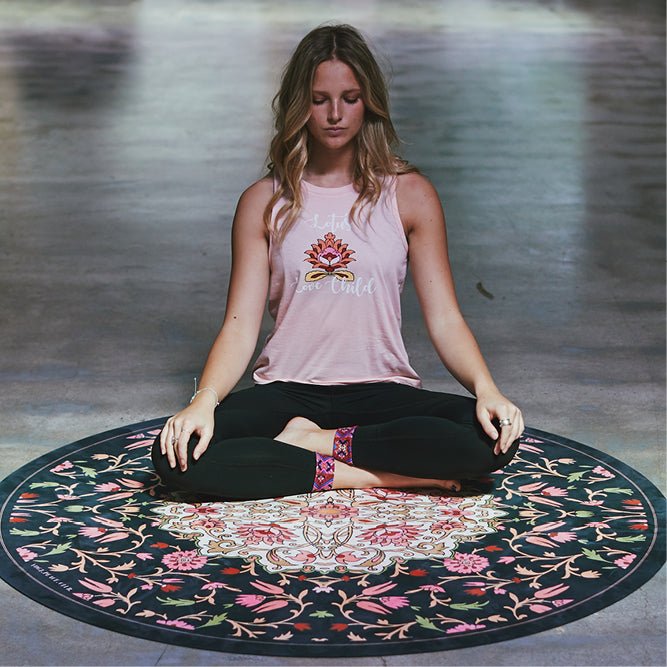My story of Lower Back pain and Yoga
Over the past 6 years I have had two major lower back pain incidents. This is my story of my back pain and how I injured myself and how I returned to normal life. Yoga was my road to recovery. Let me share my story with you.
Back pain can be painful and debilitating. It can stop you from living a normal life, and cause you to feel alone and anxious. It is so confusing what direction to take as you navigate through the many alternatives to take the pain away. I have had two major lower back pain episodes in my life where I was told surgery was the only option. I even had a physiotherapist tell me he didn't want to treat me, that there were no options other than pain med's and making an appointment at the surgeon's office.
When you are a dedicated yogi the thought of not practicing daily is torture. Back pain can be damaging mentally, emotionally and physically. The journey you take can be expensive and complicated - as there seems to be so many options and opinions. I would like to share my experience with my lower back injuries.
I am a yoga teacher. I have two beautiful children, a gorgeous husband, and Yogi Peace Club is my brand and passion. When back pain stopped me from doing the things I loved I was lost and scared. I didn't know how to take the pain away and didnt know who to trust or listen too. Through my journey I had chiro's crack me, physios massage me, and so many people telling me their experience, and what they did, and what I should be doing. I couldn't sit, drive, walk or move. I was so frightened and upset. I just felt like no one understood what I was going through.
Then I received the best advice from a very experienced physio who said "just keep it simple" and stated that I had to accept the fact it was going to take 12 weeks to get better. I couldn't stomach the fact I was going to be this way for 12 weeks, it was summer and I wanted to go to the beach and go to yoga.
The physiotherapist taped me and told to rest for a few days with the pain med's I had, to allow for the inflammation to ease. I did as I was told however I was still not feeling any better. And that's the thing with backs they take time to heal. Its a slow healing injury. No-one mentioned this, they just took my money and tried to fix me, as thats what I wanted. I wanted to be better now, I didn't want to wait.
My back injury was a severe L4/5 prolapsed disc bulge as I did end up getting a MIR scan to confirm what was going on. Although the scan didn't fix me it allowed for me to know what I was dealing with.
From my experience patience is extremely important. You need time to allow for the injury to heal. Then you need physicians you can trust.
These three steps were the pinicle moments in my healing journey:
Step one Pain Management. I didn't want to to take medication however going to the doctor and getting a good pain management program for the initial part of the injury was critical. Once I was able to manage the pain and get some sleep I was then able to better cope with the situation I was in. This was always going to be a short term solution for me. And as required I would take anti inflammatories and then I began to ease off them.
Step Two Acceptance. I had to accept I had an injury. I had to stop shopping around and looking for the quick fix. I had to accept it was going to take time and trust in my body that it could heal this injury.
Step Three A physiotherapist that I trusted. I used a physiotherapist trained in the McKenzies treatment for back pain. The McKenzie Method of Mechanical Diagnostics and Therapy (MDT), developed by Robin in the 1950s, and has become a standard in the field of back pain resolution. Robin devoted his professional life to the study of musculoskeletal disorders and their treatment and his theories are now supported with scientific evidence. It a self managed way of treating the injury at home with the supervision of a trained McKenzie specialist.
www.mckenzieinstituteaustralia.org/
It is estimated that over a lifetime there’s an 80% chance of developing back pain. Some back pain passes quickly never to be seen again but all too often those niggly little twinges develop into a chronic and costly problem. Most lower back pain that doesn’t come from some congenital problem, is caused either by heavy lifting, prolonged sitting, stooping or other poor postural habits, most of which can be prevented and many fixed. My two incidents were caused by lifting extremely heavy furniture. Which in hindsight was ridiculous! I thought I was strong however it was the ego that took over my physical ability.
It took almost exactly 12 weeks to get back onto the yoga mat. Initially I was very cautious about returning and I had lost a lot of confidence and doubted myself as a teacher. But realising what I had learnt about the spine and the injury during this time I was able to develop a more empathetic practice which was important for the growth in my quest to teach yoga.
Through a careful yoga practice we may be able to successfully manage and prevent our back problems. Let’s look at how asanas can manage the back.
When we move the spine in the six directions (bending forward, back, to the sides and rotating each way) we massage the muscles. This provides a healthy flow of blood, oxygen and nutrition to the back whilst draining away waste products and keeping the spine flexible and easy to move. Core strength developed from yoga helps to support the spine.
These three poses below assisted my back health. However, before you proceed you have to you check with your physician before you try any of these poses. Although this worked for me, everyone is different and have different levels of injury so be sure to check with your physiotherapist to ensure you are safe to try these poses.
Seal Pose

Lie face down with your hands on the floor in front of and to the sides of your shoulders.
Fingers pointing out at about a 45 degree angle. Every body is different, so you'll need to experiment to find the best hand placement,
Support your weight on your arms and release your spine. You can also let your shoulders move up and forward this pose focuses on arching the lower spine which I found very beneficial for my lumbar.
Then slowly lower to the ground and slowly push back up.
I usually do 10 rounds with an exhale breathe when I am pushed up. I love this stretch in the morning to get my lumbar spine into extension after sleep.

Pigeon Pose
I like to start this pose in all down face dog then I bring my right knee forward and place it more or less behind my right wrist. The is ankle somewhere in front of your left hip. The more your lower leg is parallel with the front of the mat, the more intense the hip opener. I have tight hips so I find that my shin runs about 45 degrees in line with the yoga mat.
Slide your left leg back, straighten the knee and point the toes. Make sure your leg is behind your body and not drawing outwards. Make sure you keep your hips square.
Gently lower yourself down and use some support under your right buttock if you need, to keep your hips level.
Inhale and lift your upper body, come on your fingertips, hands shoulder width apart, draw your belly button to spine, tailbone down and open your chest.
On an exhale walk your hands forward and lower your upper body to the floor. Y
Stay here for 5 breaths or longer and on an exhale try to release the tension in your right hip. Balance your weight on both legs.
To come out of the pose push back through the hands and lifting the hips, move back into down face dog.

Bridge Pose
Lie supine on the floor then bend your knees and set your feet on the floor, heels as close to the sitting bones as possible.
Exhale and, pressing your inner feet and arms actively into the floor, push your tailbone upward and firm the buttocks. Then lift the buttocks off the floor. Keep your thighs and inner feet parallel. You can also try this with a block as I have in this photo for a supported back bend.
Lift your buttocks until the thighs are about parallel to the floor. Keep your knees directly over the heels, but push them forward, away from the hips, and lengthen the tailbone toward the backs of the knees.
Stay in the pose anywhere from 30 seconds to 1 minute. Or if you using the block rest here for up to 3 mins. Lift up to remove the block and release with an exhalation, rolling the spine slowly down onto the floor.
I would love to read you comments about your journey with injury. Please write a message and share your experience with yoga and injuries.
My Favourite websites
https://www.mckenzieinstituteaustralia.org



